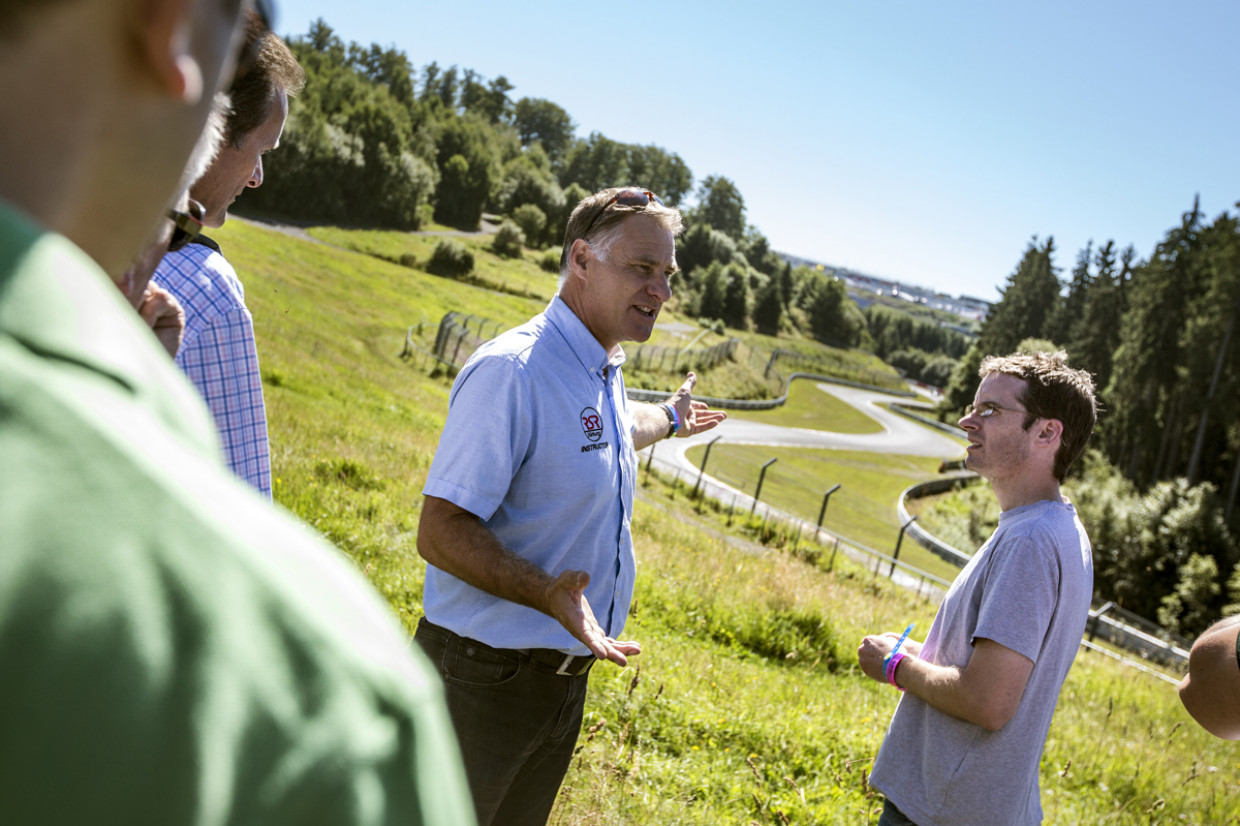
The last time I went to the Nürburgring, it was October, which meant that it was wet, cold and misty. The few slippery laps that I completed on the Nordschleife – behind a pace car during a BMW event – were therefore somewhat trepidatious. A couple of weeks ago, I had the opportunity to return, and this time was greeted by glorious, unbroken sunshine.
A small group of us was there with Ron Simons Racing, which arranges car hire, track days, instruction and tours of the ’Ring and Spa – only about an hour away across the Belgian border. Ron himself (main picture above, on left) is an experienced racer and tutor, a Dutchman with an understated tone but a flamboyant driving style. We began our trip with a tour around the ’Ring via the surrounding roads, stopping every now and again to venture trackside.
To my delight, our first port of call was a short section of the Sudschleife. This oft-forgotten 4.7-mile loop of the Nürburgring opened in 1927 but fell into disuse in the early 1970s. Much of its north-eastern corner was lost when the current Grand Prix circuit was built the following decade. The outward leg, which dropped sharply from the start/finish area towards the village of Müllenbach, has now been turned into public highway, albeit with some of the corners eased. Simons tells how one of the old control posts still stands in the verge – the only reminder of the road’s former life.

The section on which we stopped (above) is a steep rise near the end of the lap – in the course of the return leg from Müllenbach, the course climbs almost 150 metres. Here, the track has simply been abandoned, the saplings that would have lined the circuit having grown into trees. I’ve yet to work out exactly why I have such a fascination with disused circuits, but I could have stood on this spot for ages, visualising the cars coming through.




